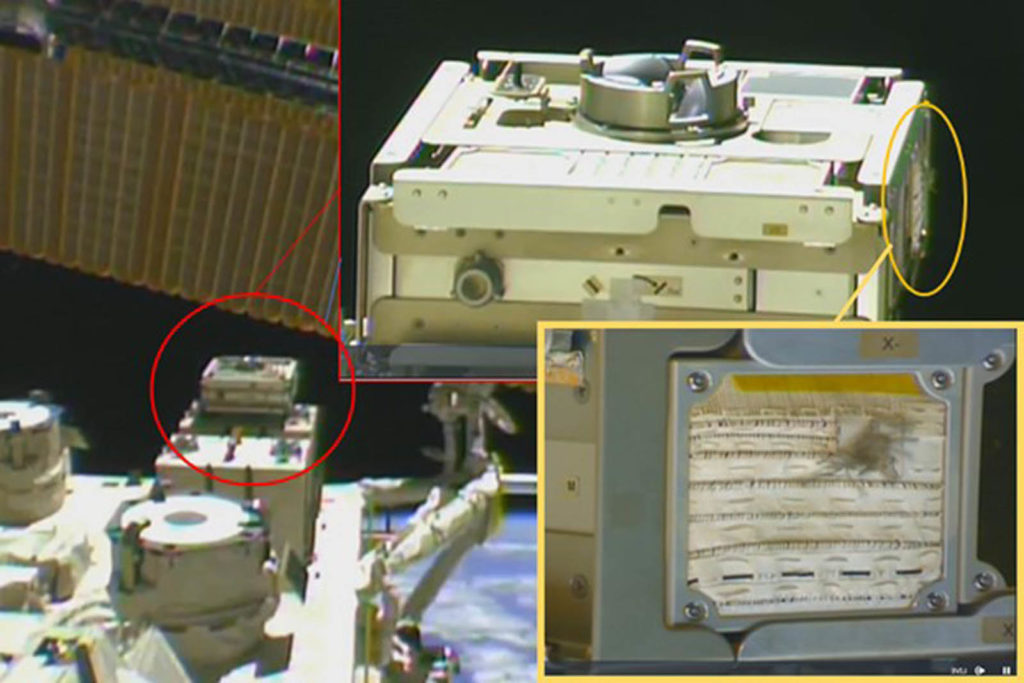
A team of MIT researchers has sent samples of high-tech fabrics, some with embedded sensors or electronics, to the International Space Station (ISS). According to information released by MIT News, the samples will be exposed to the space environment for a year to determine a baseline for how well these materials survive the harsh environment of low Earth orbit.
The hope is that this work could lead to thermal blankets for spacecraft that could act as sensitive detectors for impacting micrometeoroids and space debris. Ultimately, another goal is new smart fabrics that allow astronauts to feel touch through their pressurized suits.
In an interview with MIT News, three members of MIT’s multidisciplinary team offered insights into the experiments, including the idea of turning the outside surface of the ISS into “an enormous space debris and micrometeoroid impact sensor,” said graduate student Juliana Cherston.
“The samples that we worked with JAXA, the Japanese space agency, and Space BD to send to the International Space Station incorporate materials like charge-sensitive synthetic fur—an early concept—and vibration-sensitive fiber sensors—our project’s focus—into space-resilient fabrics,” said Cherston. “The resulting fabric may be useful for detecting cosmic dust of scientific interest and for damage detection on spacecraft.”
At present the ISS white surface is “Beta cloth,” a Teflon-impregnated fiberglass designed specifically to shield the spacecraft. The fabric sensors, which form a kind of “quilt” on the ISS surface, will remain unpowered for this first in-Space test.
Additionally, the fabric samples contain thermally drawn “acoustic” fibers developed with ISN funding that can convert mechanical vibration energy into electric energy. “When micrometeoroids or space debris hit the fabric, the fabric vibrates, and the ‘acoustic’ fiber generates an electrical signal,” said postdoctoral researcher Wei Yan.
“Space is definitely a new frontier for our research,” Yan continued. “While lots of terrestrial applications have been envisioned in ambient conditions and even under water, from low Earth orbit to planetary bodies, space is a unique environment with atomic oxygen, radiation, high-speed impactors and extreme temperature cycling. How will the fibers and fabrics perform there and what changes will be induced in the fiber materials? How should electronic fabrics be designed in order to meet demands of aerospace applications? There are so many scientific and technological questions.”
 TEXTILES.ORG
TEXTILES.ORG


